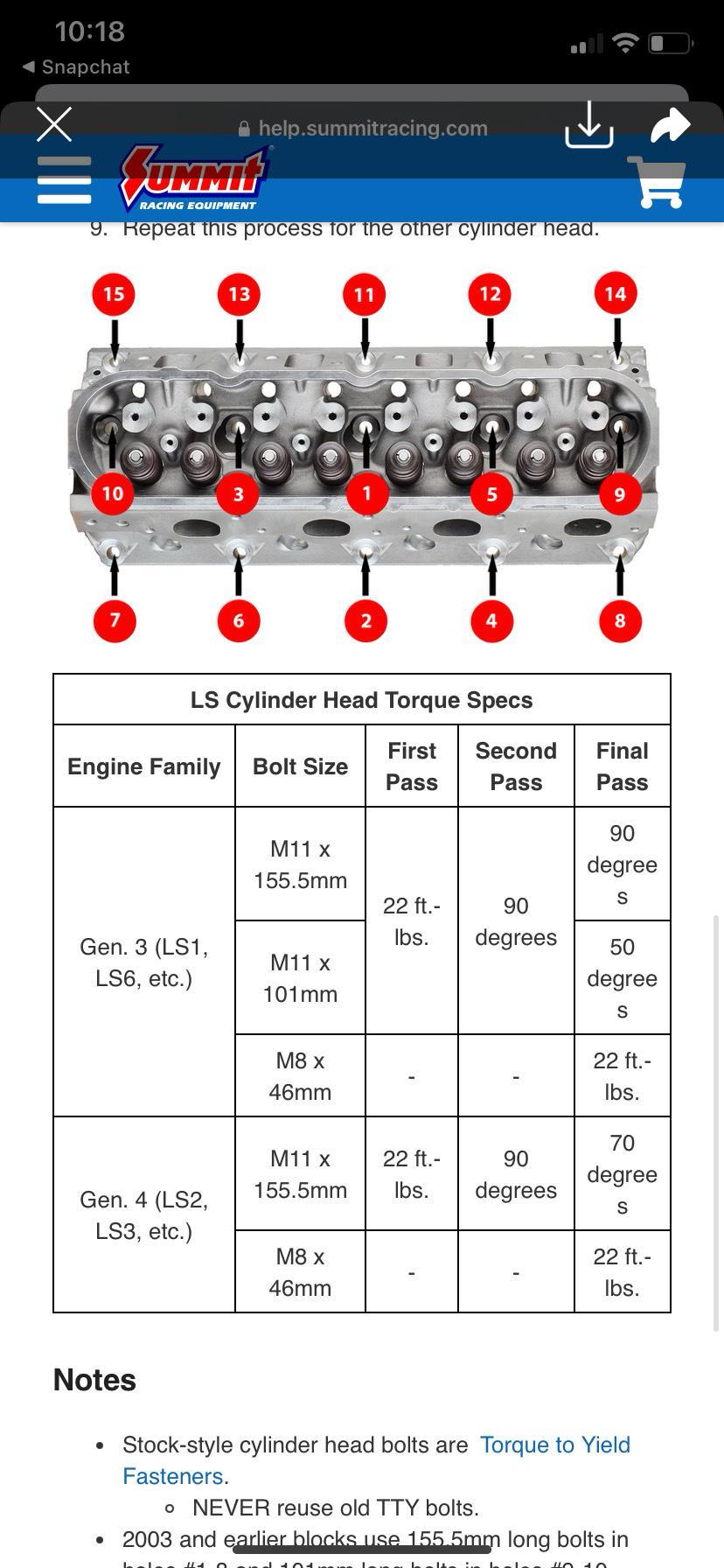Correct head bolt torque is critical for engine integrity on the Chevrolet 5.3L V8 engine. Incorrect application can cause head gasket failure, coolant leaks, cylinder warping, or catastrophic engine damage.
Chevy 5.3 Head Bolt Torque Specifications
- New torque-to-yield head bolts must be used for all installations; reuse can lead to bolt failure.
- Standard torque sequence (in lb-ft unless noted):
- Step 1: Lubricate bolt threads with clean engine oil and torque to 22 lb-ft.
- Step 2: Torque to 45 lb-ft.
- Step 3: Tighten an additional 120 degrees using an angle gauge tool.
- For factory replacement bolts, follow GM service manual guidelines; deviations risk improper clamping force.
Proper Torquing Sequence
Perform all torques in three stages following the engine-specific pattern. Start from the center bolts and work outward in a spiral sequence. Use a calibrated torque wrench and angle gauge for accuracy. Ensure threads and mating surfaces are clean and free of debris.
- Stage 1: Apply Step 1 torque to all bolts in sequence.
- Stage 2: Apply Step 2 torque in the same sequence.
- Stage 3: Apply Step 3 angle tightening in order; verify each bolt with a click-type angle gauge.
Key Tips to Avoid Costly Mistakes
Ignoring torque specs or procedures can lead to immediate leaks or long-term engine failure, resulting in repairs costing thousands. Always adhere to these practices:

- Never reuse old bolts: Torque-to-yield bolts stretch permanently; reuse causes weakness and blowouts.
- Use precise tools: Inaccurate wrenches or lack of angle gauges cause under/over-torquing; calibrate tools before use.
- Clean and prep surfaces: Dirt or residue on threads or head surfaces prevents even clamping, leading to warping.
- Follow sequential tightening: Skipping or altering the sequence risks uneven pressure and gasket blowout.
- Check for manufacturer updates: GM occasionally revises specs; consult the latest service manual if unsure.
Adhering to these specifications minimizes risks, ensuring optimal engine performance and avoiding expensive downtime.

